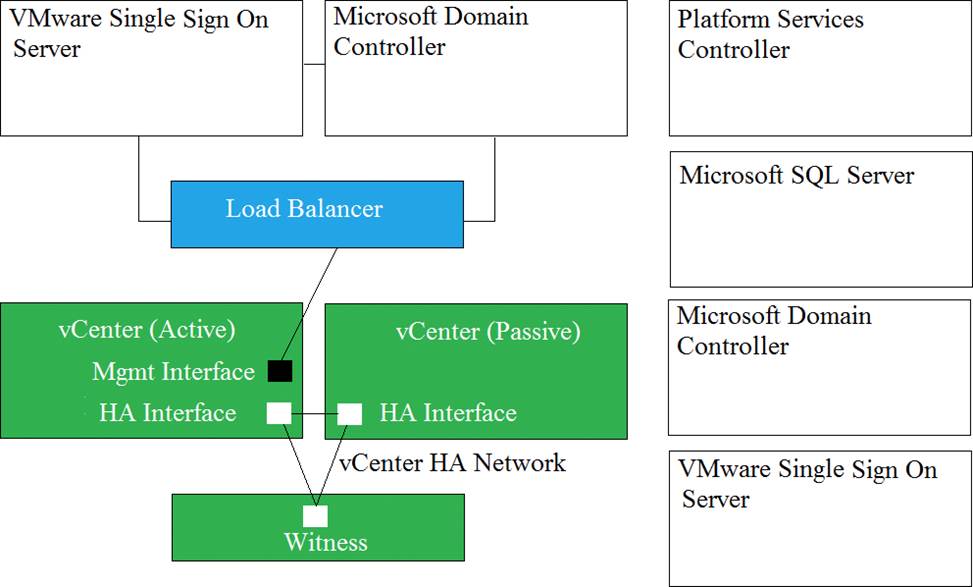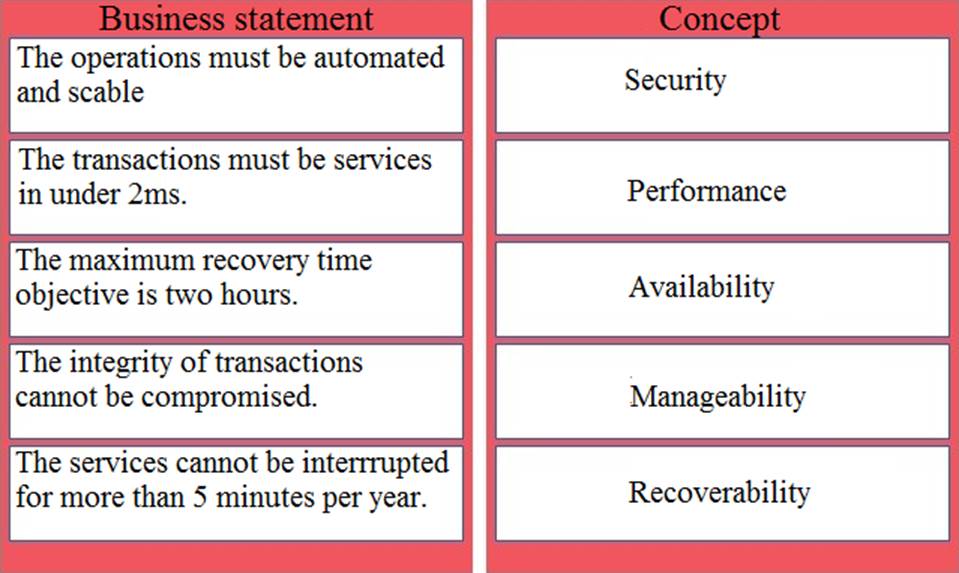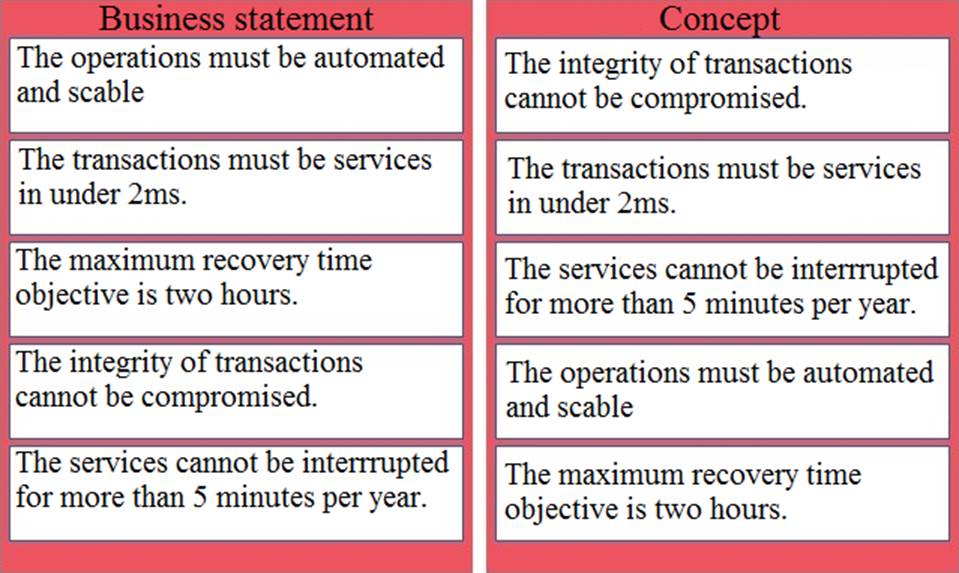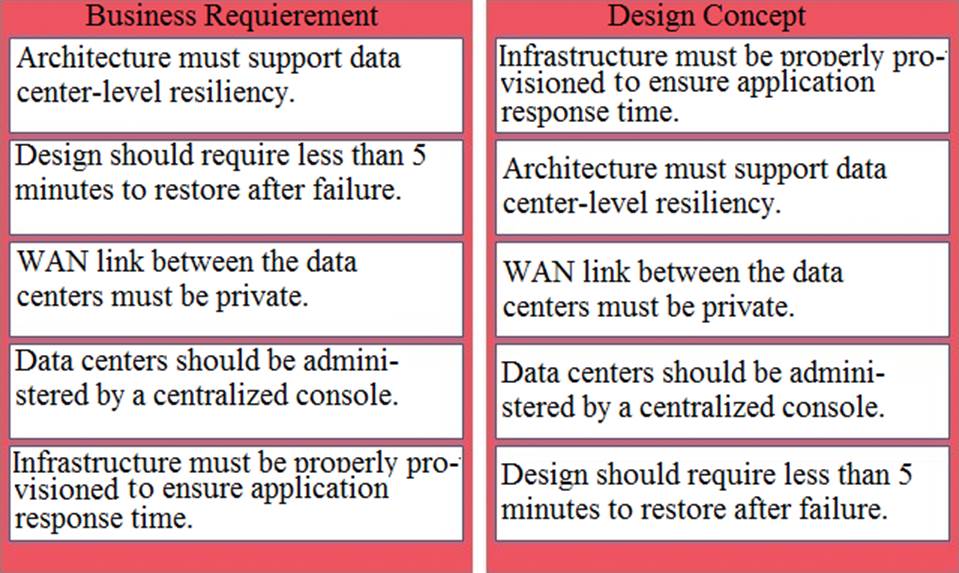VMware 3V0-624 VMware Certified Advanced Professional 6.5 – Data Center Virtualization Design Exam Online Training
VMware 3V0-624 Online Training
The questions for 3V0-624 were last updated at Feb 02,2025.
- Exam Code: 3V0-624
- Exam Name: VMware Certified Advanced Professional 6.5 – Data Center Virtualization Design Exam
- Certification Provider: VMware
- Latest update: Feb 02,2025
A company provides critical financial and statistical data for several major banks.
• The company ensures that the bank’s customer data is secure and that analytics data is available when needed.
• Customers rely on this data before making crucial business and financial decisions.
• Just a few minutes of downtime can result in loss of revenue and trust.
• To meet high-availability requirements, the company’s IT infrastructure components must be redundant.
• The company established three data centers across the globe and interconnected them with high-speed WAN links.
• Due to the rapid growth of its customers and their increasing demands, the compute, network, and storage were procured and managed by the company’s enterprise system administrators group.
What are its two key challenges? (Choose two)
- A . Data centers across the globe possess manageability problems.
- B . Availability of business applications must be ensured.
- C . Regulatory requirements must be met.
- D . Hardware-defined data centers have limitations.
A company has requested assistance with a new cross-site failover design to support business-critical applications.
• It has two sites when are very well-connected, and latency is less than 5ms round trip.
• The customer requires that its applications be restarted even in the event of a total site failure.
• The applications must be kept online even when migrated during maintenance.
• Storage arrays at either site support both synchronous and asynchronous replication.
Which two options are accurate application requirements for this scenario? (Choose two.)
- A . The design must ensure continuous application uptime even during a total site failure.
- B . The design must prioritize application availability.
- C . The design must ensure application recoverability at the second site.
- D . The applications are latency-sensitive.
A virtualization administrator has been tasked with migrating several business applications from physical to virtual. The administrator must also migrate the virtual machines from VMware Workstation to vSphere 6.5, using vCenter Converter Standalone 6.1.
In this scenario, when two source types are supported? (Choose two.)
- A . powered-off Windows Server 2008 physical machine
- B . powered-on Windows Server 2000 Workstation virtual machine
- C . powered-off Windows Server 2008 Workstation virtual machine
- D . powered-on Windows Server 2008 physical machine
DRAG DROP
In the vCenter HA configuration below, drag the two correct components to the blank boxes in this diagram. The same component may be used more twice. (Choose two.)
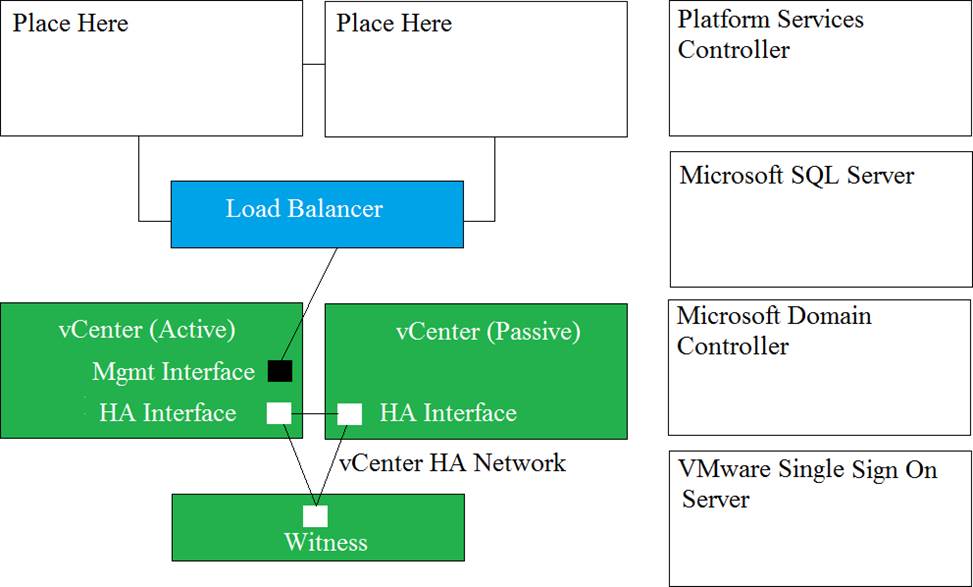
View the exhibit.
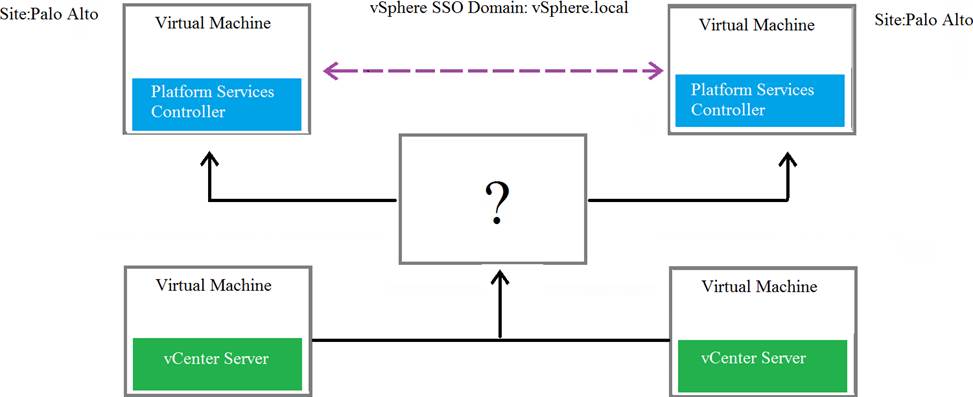
Referring to the exhibit, which appliance or device belongs in the square with the question mark?
- A . Firewall Appliance
- B . Load Balance
- C . Platform Services Controller
- D . vCenter Server Appliance
A developer is tasked with building an application to process shipping requests. The developer is consulting the vSphere team to determine failover options and performance best practices.
• The development team is providing three physical ESXi hosts with 8 CPU cores and 256G8 of RAM per host.
• The developer does NOT know how many virtual machines they will require.
Which virtual machine (VM) sizing strategy will provide the highest level of uptime, individual VM performance, and failover capacity?
- A . A few large 8 vCPU VMs per host protected by vSphere HA.
- B . Many small 1 vCPU VMs participating in an OS level clustered application protected by vSphere HA.
- C . A few large 8 vCPU VMs per host protected by vSphere Fault Tolerance.
- D . Many small l vCPU VMs participating in an OS level clustered application protected by vSphere Fault Tolerance.
A company has requested a new vSphere 6.5 design that will allow it to finally break the 80% virtualization barrier by virtualizing its resource-intensive application.
• The application is highly available by design and includes application-aware clustering software capable of operating as a fully distributed system.
• The company’s Application Version 2.0 consists of 386 small applications and middleware with non-persistent storage and 24 database virtual machines at each data center.
• When coupled with a proper load balancing solution, this application can continue operating even with the loss of an entire data center, but the small applications and middleware tiers within a data center must exist within the same broadcast domain.
• The database tier is tightly controlled with a firewall policy that only allows middleware tier access, and is replicated to other sites using a dedicated circuit.
Which two application requirements apply to this scenario? (Choose two.)
- A . The application will require the configuration of an IGMP stub and helper.
- B . Shared storage is required by the application clustering software.
- C . The application will require one large subnet.
- D . The application will require a method of balancing and recovering sessions between sites.
DRAG DROP
A company is a leading provider for an online travel booking system with over a $1,000,000 turnover each day. The company warns to leverage VMware cloud solutions to consolidate, scale, and ensure high availability for all of its data centers.
Match each business requirement to its appropriate design concept.
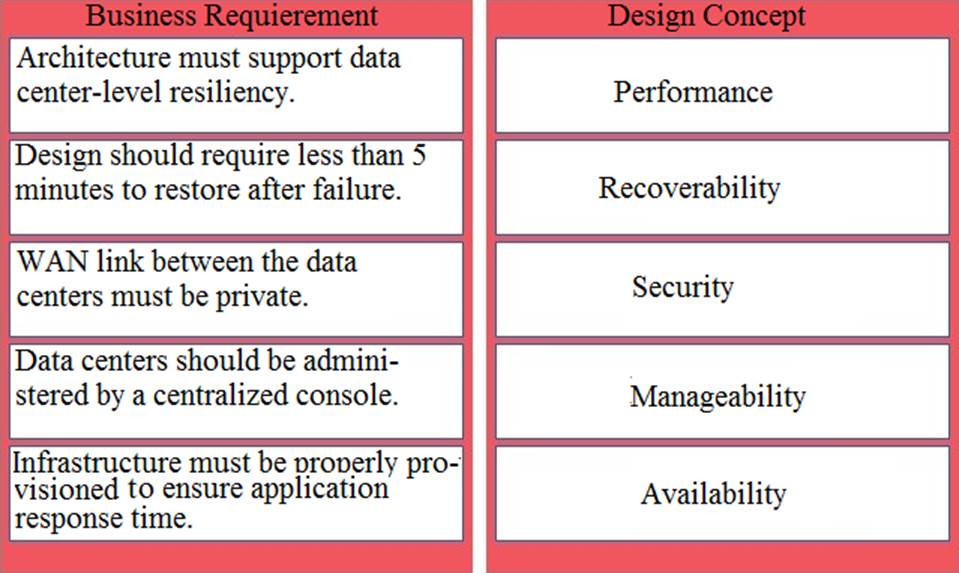
A customer is using a vSphere APIs for Storage Awareness (VASA) compatible storage array. The VASA provider is published as a virtual appliance.
To ensure recoverability, where must the VASA prowler and vCenter server virtual machines be stored?
- A . The VASA provider and vCenter Server will be placed on the standard datastore (VMFS, NFS).
- B . The VASA provider and vCenter Server will be placed on the vVol datastore.
- C . The vCenter Server will be placed on the vVol datastore and the VASA provider will be placed on the standard datastore (VMFS, NFS).
- D . The VASA provider will be placed on the vVol datastore and the vCenter Server will be placed on the standard datastore (VMFS, NFS)
Latest 3V0-624 Dumps Valid Version with 123 Q&As
Latest And Valid Q&A | Instant Download | Once Fail, Full Refund

